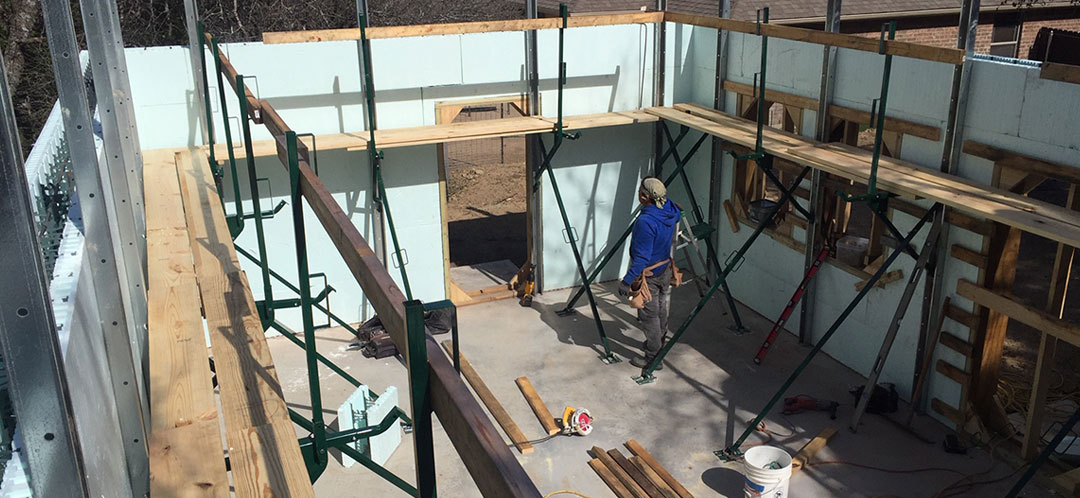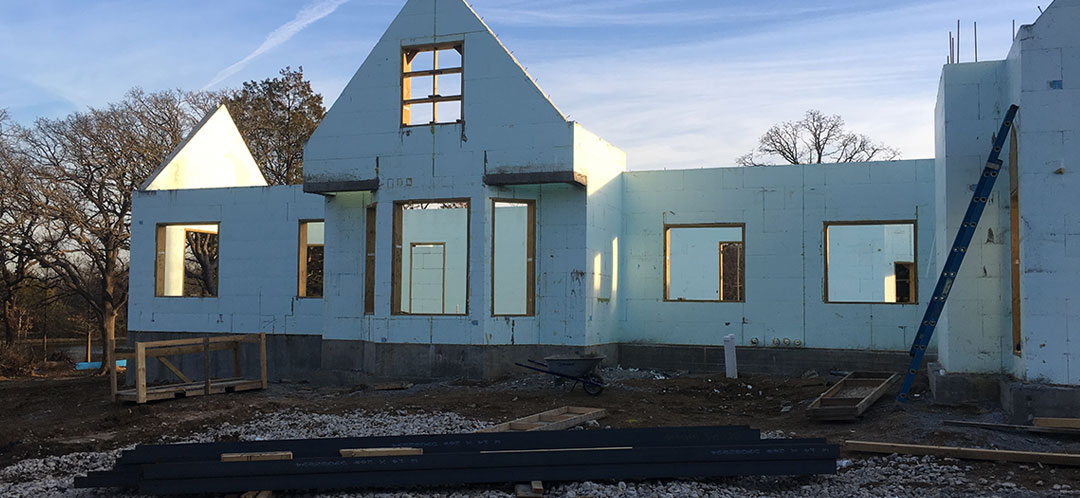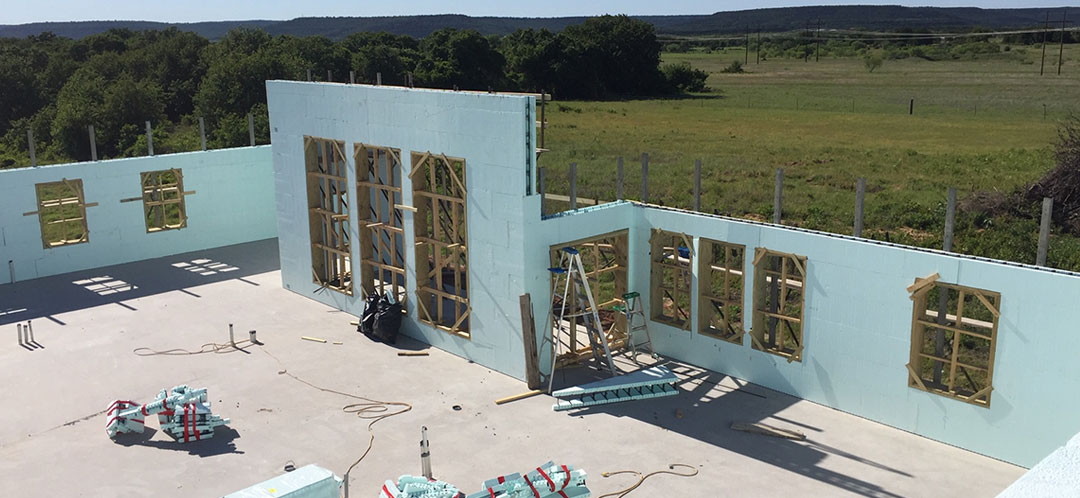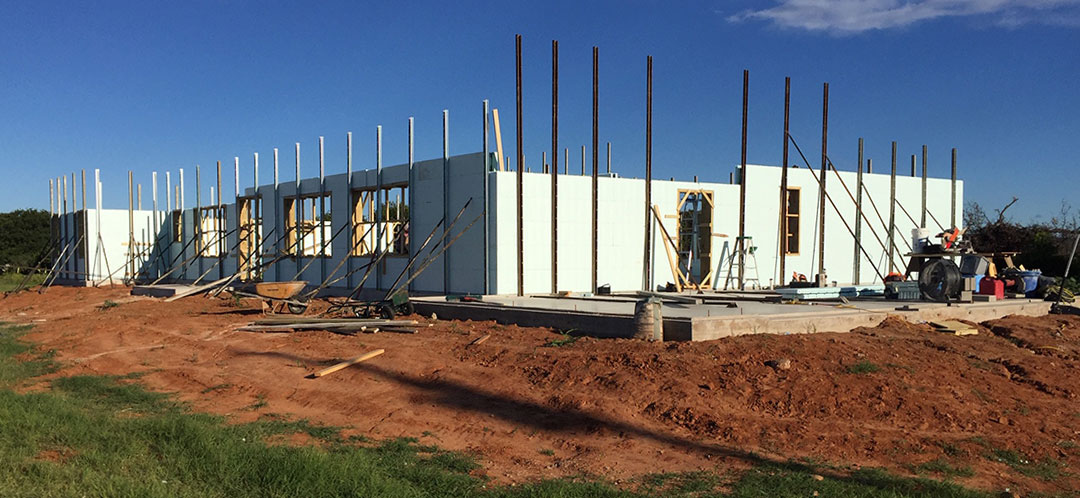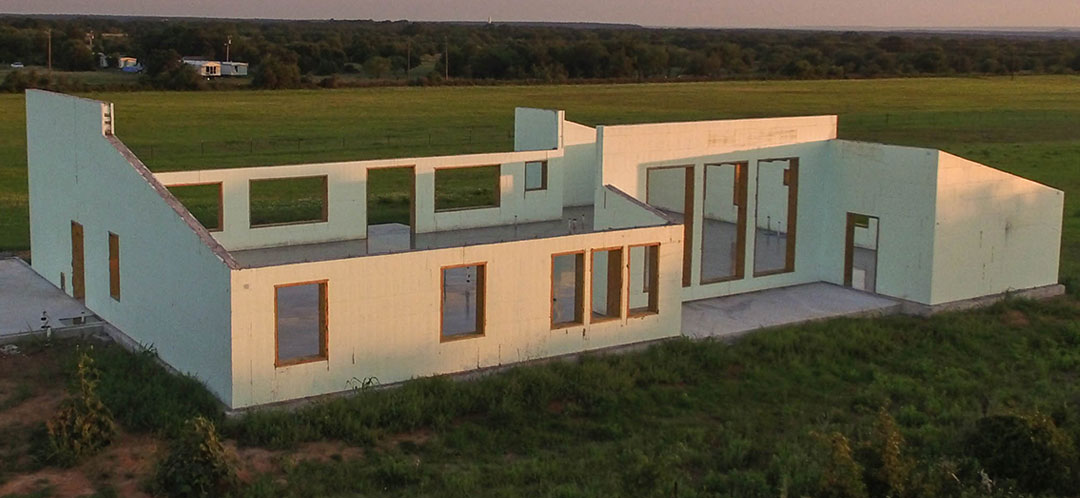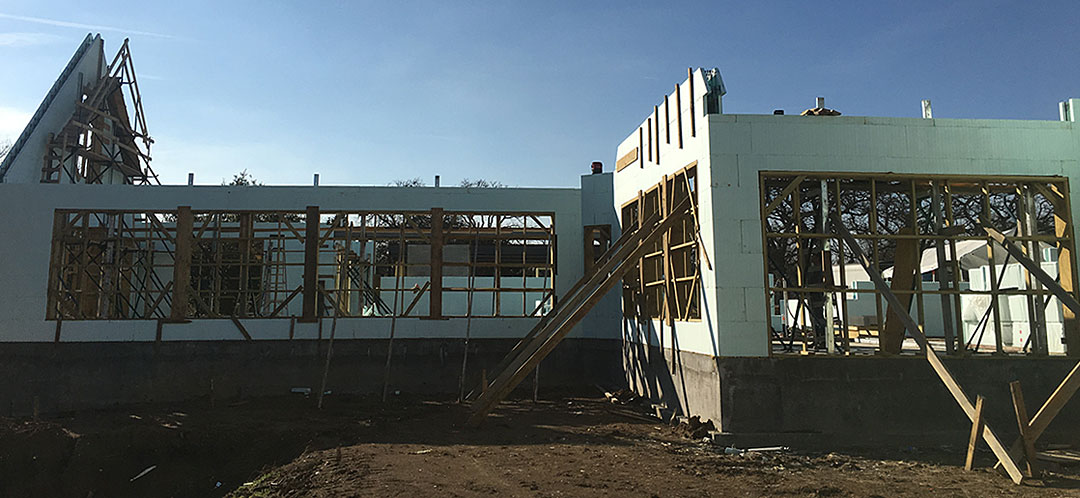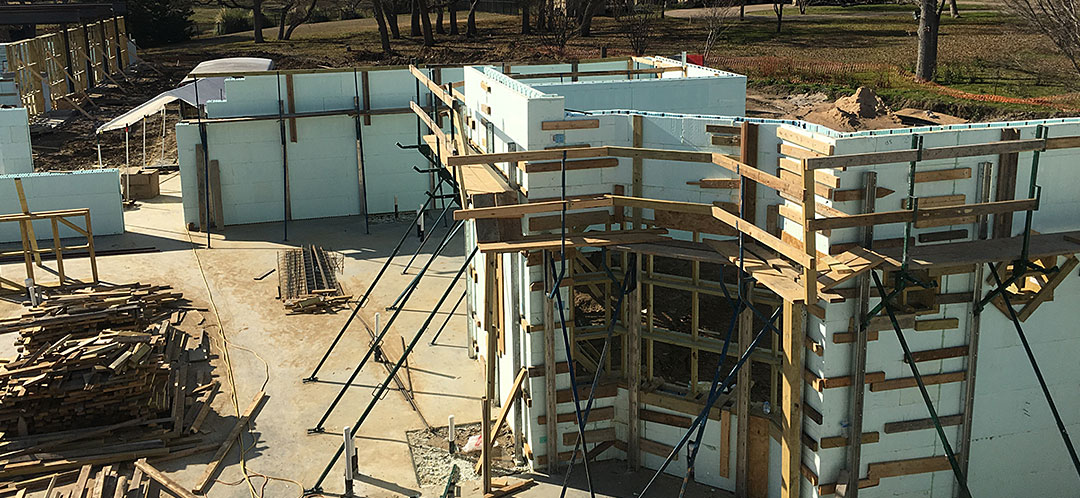Insulated Concrete Forms (ICF) - Safe Rooms
Safe Rooms
Thirteen minutes… Thirteen minutes... Thirteen minutes... That is all the time you have on average to seek shelter after a tornado warning is issued. If you are at home when the warning comes, staying put will give you the best odds of survival. And those odds will increase substantially if you a have safe place in your home to ride out the storm.
For people living in wood-frame homes without basements, that “safe” place often ends up being an interior room, such as a closet or bathroom, with no windows. But in a powerful tornado or hurricane packing winds of more than 250 miles per hour, even well-constructed frame houses can be lifted right off their foundations, and large debris can turn into airborne missiles. During such extreme conditions, one of the safest places you can be is in a storm shelter, or safe room, constructed of reinforced concrete with no windows and a concrete floor and roof system overhead.
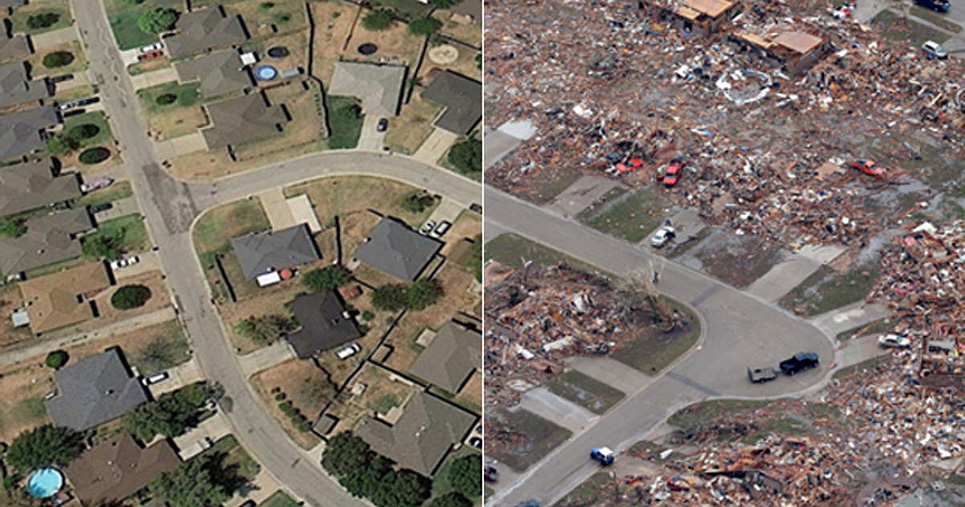
This is why more and more people, especially homeowners living in tornado-prone areas, are building concrete safe rooms in new and existing homes. When constructed according to approved plans, these windowless, heavily reinforced structures can withstand winds exceeding 250 mph and projectiles traveling at 100 mph or greater, protecting occupants from Mother Nature’s worst wrath.
Building a concrete safe room is not a project we take lightly. It can be a complex proposition, especially if you are adding one to an existing home. But it is impossible to put a value on a structure that will give you peace of mind and could save your life. Here are a few factors to consider before building a concrete safe room as well as guidelines and resources for safe room construction.
What is a Safe Room?
A safe room is a small, windowless chamber specifically designed and constructed to meet Federal Emergency Management Association guidelines, which are outlined in the publication Taking Shelter from the Storm: Building a Safe Room for Your Home or Small Business (FEMA P-320).
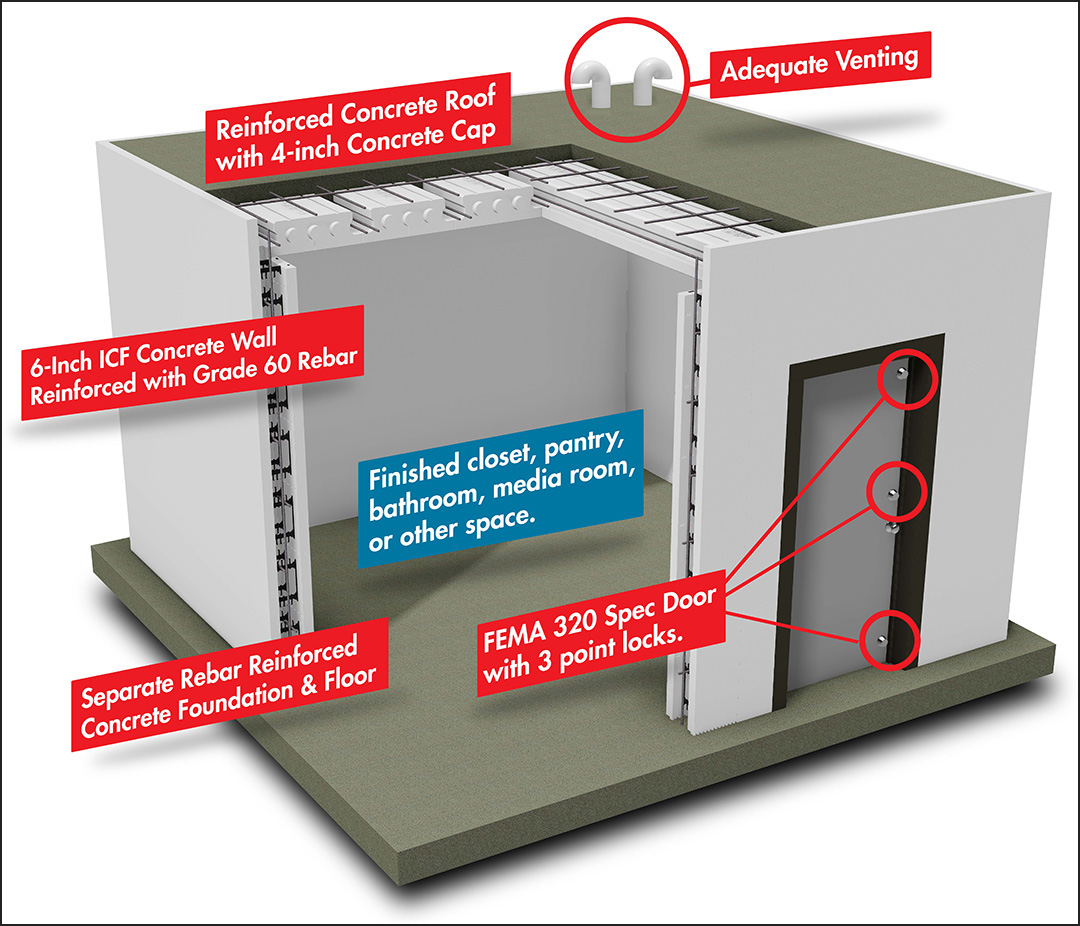
These structures are built to provide “near-absolute protection” for the occupants during extreme windstorms by meeting the following criteria:
- They are adequately anchored to the home’s foundation to resist overturning and uplift.
- The connections between all parts of the safe room are strong enough to resist failure during high winds.
- The walls, roof, and door are designed to resist perforation by windborne missiles.
- The walls of the safe room are completely separate from the structure of the home, so they will remain standing even if portions of the home around it are destroyed.
Safe room walls and roofs can be built using ICF blocks. The doors are typically made of high-gauge steel tested to resist high wind forces and perforation by windborne debris.
Why Build a Safe Room Using Concrete
By far, the biggest danger to people and property during tornadoes and hurricanes is the flying debris carried by the high winds. Any heavy windborne object can become a missile that can easily penetrate building walls.
You can build concrete safe rooms that withstand such impacts using 4- and 6-inch flat ICF walls. Basic safe room designs for these structures can be found in the FEMA publication Taking Shelter From the Storm.
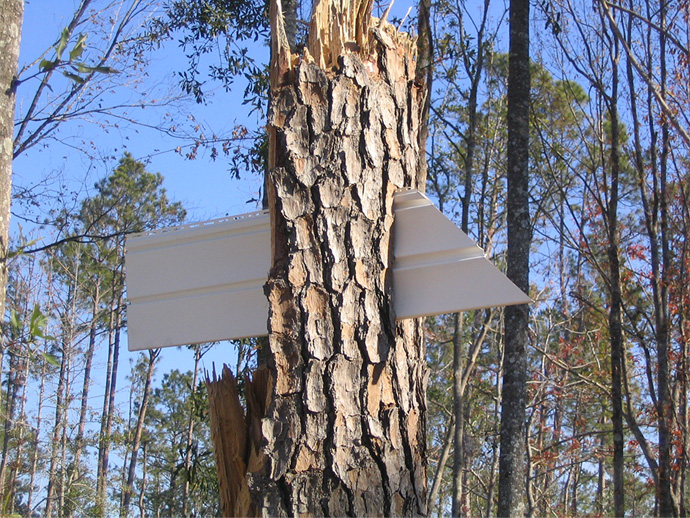
*Piece of flimsy vinyl siding projected forcefully enough thru the air by tornado winds to penetrate a solid pine tree.
To duplicate the effects of windborne debris, researchers at Texas Tech University’s Wind Engineering Research Center shot wall sections with 15-pound 2x4 lumber to simulate debris carried in a 250-mph wind. These conditions cover all but the most severe tornadoes. They tested 4x4-foot sections of concrete block, several types of insulating concrete forms: ICF, steel studs, and wood studs to rate their performance. The wall sections were finished as they would be in a completed home, with drywall, fiberglass batt insulation, plywood sheathing, and exterior finishes of vinyl siding, clay brick, or stucco. All the concrete wall systems survived the tests with no structural damage. Lightweight steel and wood-stud walls, however, offered little or no resistance to the test missiles.
In addition to extreme wind events, concrete safe rooms can provide protection from other disasters, including earthquakes, fires, and blast forces. See Disaster Resistance Benefits of Concrete, from the Portland Cement Association.
Insulated Concrete Forms (ICFs)
ICF s are basically forms for poured concrete walls that stay in place as a permanent part of the wall assembly. Made of foam insulation or other insulating material, they come in two basic configurations: pre-formed interlocking blocks into which the concrete is poured, and as individual panels with plastic connectors that form cavities into which the concrete is poured. All major ICF systems are engineer-designed, code-accepted, and field-proven.
To further help homebuilders and homeowners build economical safe rooms for new and existing homes, the Portland Cement Association developed safe room plans specifically for insulating concrete forms (ICF s).
Up until now, the Federal Emergency Management Agency's (FEMA) guide for safe room construction included plans for conventionally cast concrete safe rooms and reinforced concrete masonry safe rooms. The new plans now include details for 4- and 6-inch flat ICF walls.
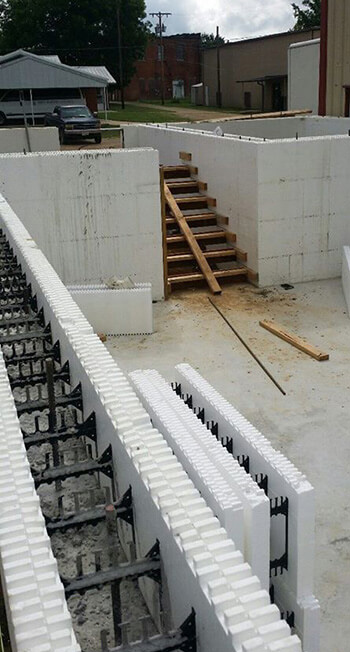
Assessing Your Risk: Do you Need a Safe Room?
Do you live in a high-risk area? According to the National Oceanic and Atmospheric Administration, tornadoes have been documented in every U.S. state and on nearly every continent. However, some parts of the country, such as the zones in “tornado alley,” are much more prone to tornadoes than others. If you live in the hurricane-susceptible Gulf and Atlantic states, you are exposed to a potential double-whammy, since the severe weather from hurricane conditions often spawns tornadoes.
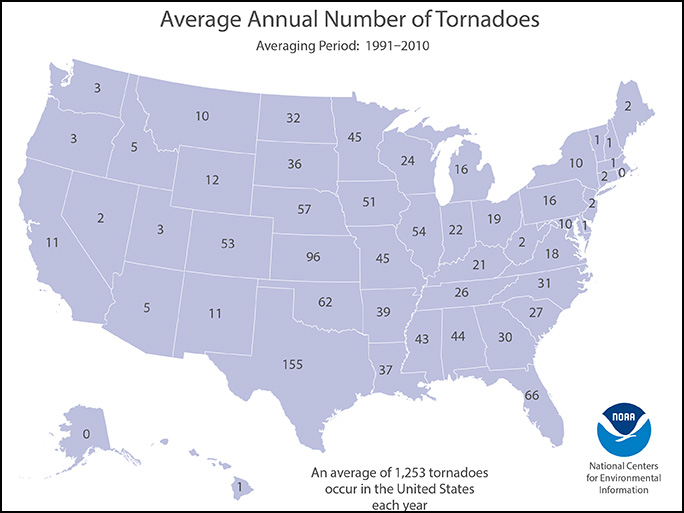
What code design winds is your home built to withstand? Most homes are built in accordance with local building codes that consider the effects of minimum, code-approved wind impacts in your area. In most tornado-prone regions, the building code design wind event is 90 mph. So simply living in a home built to code does not mean you are protected from the winds and windborne debris generated by an extreme tornado or hurricane. Even a Category 1 hurricane (at the lowest end of the Saffir-Simpson Hurricane Wind Scale) can have winds as high as 95 mph, and a relatively minor EF 1 tornado can unleash winds exceeding 100 mph.
Saffir-Simpson Hurricane Wind Scale
| Category | Wind Speed | Possible Damage |
|---|---|---|
| 1 | 74 - 95 MPH | Some Damage |
| 2 | 96 - 110 MPH | Extensive Damage |
| 3 | 111 - 129 MPH | Devastating Damage |
| 4 | 130 - 156 MPH | Catastrophic Damage |
| 5 | 157+ MPH | Catastrophic Damage |
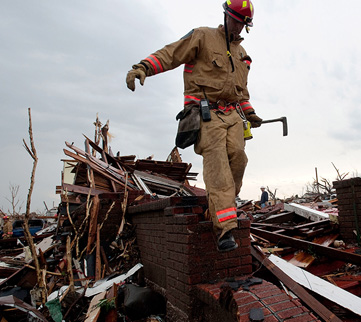
Where To Locate a Concrete Safe Room
A safe room can be incorporated into the construction of a new home, or it can be retrofitted into an existing one. In-ground and basement safe rooms provide the highest level of protection. If there is no basement, an in-ground safe room can be installed beneath a concrete slab-on-grade foundation or concrete garage floor. A safe room can also be located in a central, interior, ground-floor area of the home if built according to FEMA guidelines. For tornado-prone areas, you should locate your safe room so that you can reach it as quickly as possible from all parts of your home.

Possible safe room locations in a home on a slab-on-grade or crawlspace foundation include the following spaces on the first floor:
- Bathroom
- Closet
- Storage room
- Laundry room
- Corner of the garage
Possible safe room locations in a basement include:
- A corner of the basement, preferably where the basement walls are below ground level
- A bathroom, closet, or other interior room in the basement
- As a freestanding addition to the basement
Note that if your house is located in an area prone to flooding or storm surges, or if someone living in your home is handicapped or physically challenged, the basement may not be a suitable location for a safe room.
What is the Cost of Installing a Safe Room?
Costs for safe room construction vary across the United States. The cost for constructing an 8- by 8-foot safe room that can double as a closet, bathroom, or utility room inside a new home ranges from approximately $9,500 to $10,500 or for a larger 14- by 14-foot safe room inside a new home ranges from approximately $14,500 to $16,750.
The main factors that influence the cost of a concrete safe room include:
- The size
- The location of the safe room within the home
- The type of door used (Standard or Custom)
- The type of foundation on which the safe room is constructed
The cost of retrofitting an existing home to add a safe room will vary with the size of the home and its construction type. In general, safe room costs for existing homes will be approximately 20% higher than those in new homes.
Some communities offer incentives for owners who wish to build a safe room or shelter, including reduced property taxes. You may also be able to obtain FEMA funding to construct a safe room. Some state and local governments have engaged in grant programs with the federal government to partially subsidize the construction of safe rooms.
Safe Rooms for Hurricanes and Tornadoes, from FEMA
Monster Constructors is your premiere provider for your ICF requirement be it a saferoom built to FEMA specifications, your dream home, an ICF swimming pool, underground structure or living shelter, we have you covered!
Reach out and let us know how we can best help you and your family.
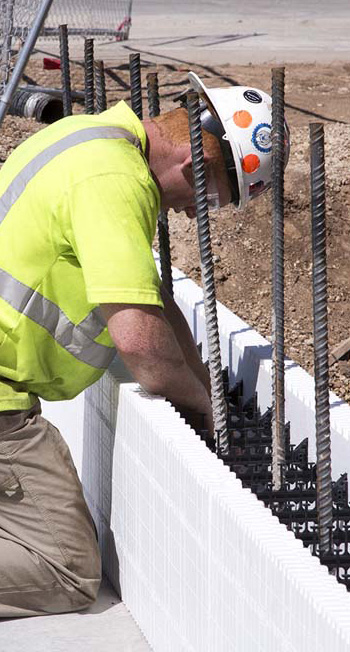
"Very Professional and Easy To Work With"
"I was referred to Monster Constructors by a friend who had use them in the past. When I contacted the company, I was impressed with the attention I received, and information given freely about options in constructing a safe room for my family. I am very pleased with the finished addition to our home that now serves as a guess room and safe room all in one. Very professional company and easy to work with, I recommend them to all of my co-workers when talks of projects come up. They are the go-to people!"
Patrick H. – Denton, Texas (Safe Room)

Accepting Digital Asset Payments

